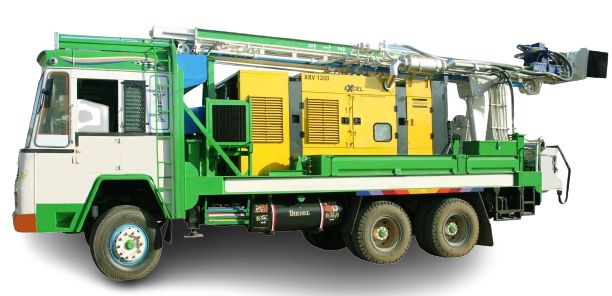A CNC router is one of the most valuable tools in a modern woodworking shop. Whether you’re building cabinets, signs, furniture, or custom art pieces, investing in the right machine upfront will save you time, money, and frustration down the line.
Here’s a step-by-step guide to help you choose the best CNC router for your woodworking needs—whether you’re a startup, scaling a custom shop, or upgrading from a manual workflow.
1. Define Your Production Requirements
Before comparing specs, start with what matters most: your work.
- Workpiece Size:
Do you need to cut full 4′×8′ sheets (e.g., plywood or MDF panels) or smaller blanks? - Material Types:
Will you be working with solid wood, MDF, plywood, acrylic, or all of the above?
Different materials require different spindle speeds and bit types. - Production Volume:
Are you producing one-offs, small batches, or full-scale cabinet runs?
Higher throughput demands automation and rugged components.
2. Determine Key Machine Specifications
Axes & Travel
- Standard machines operate in 3-axis (X, Y, Z).
- Add a 4th rotary axis if you plan to engrave or mill cylindrical parts.
Spindle Power & Speed
- 2–5 HP: Good for hobbyists or light commercial work.
- 7–12+ HP: Needed for full-speed MDF cutting or hardwood carving.
- Speed range: 8,000–24,000 RPM for clean cuts without burning edges.
Table Type & Workholding
- T-slot Tables: Use clamps, fixtures—great for small parts and thick materials.
- Vacuum Tables: Fast sheet loading, ideal for cabinetry and sign-making.
3. Assess Control System & Software Compatibility
- Controller Types:
Popular options include Mach3/4, Centroid, or proprietary OEM systems.
Prioritize ease of use, documentation, and local support. - CAM Software:
Ensure the machine integrates with packages like VCarve, Aspire, Fusion 360. - Connectivity:
USB, Ethernet, or wireless for transferring G-code files—ensure it’s reliable and secure.
4. Inspect Build Quality & Motion Components
Frame & Gantry
- Look for welded steel or heavy-duty aluminum.
- Cross-bracing helps reduce vibration and increase precision.
Linear Motion
- Ball screws (on Z-axis) offer high accuracy.
- Rack & pinion (on X/Y) is faster for long-distance travel.
- All axes should have quality linear guide rails for repeatability.
Cable Management
- Machines should include drag chains and cable carriers to protect wiring from dust and motion stress.
5. Compare Features & Optional Upgrades
- Automatic Tool Changer (ATC):
Saves time on jobs requiring multiple bits—great for production shops. - Tool Length Probing:
Speeds up setup and ensures consistency across jobs. - Integrated Dust Collection Ports:
Keep your work area clean and prolong machine life. - Safety Guards or Enclosure:
Helps reduce noise and contain debris.
6. Budgeting & Total Cost of Ownership
Factor in more than just the sticker price:
- Base Machine Price + Options
(ATC, vacuum table, spindle upgrade, probing) - Installation Costs
(rigging, power setup, dust collection) - Recurring Costs
(router bits, collets, spindle bearings, lubrication) - Training & Support Packages
Onboarding and preventive maintenance may require upfront or annual investments.
7. Research Vendors & After-Sales Support
Authorized Dealers
- Provide warranties, training, refurbishment, and on-site tech support.
Ask for References
- Visit a nearby shop using the same model.
- Ask about cut quality, service responsiveness, and uptime.
Factory Direct vs. Local Support
- Factory direct may be cheaper—but local resellers often provide faster service and spare parts.
8. Request a Demo & Sample Cut
- Inspect the Machine:
Review weld quality, component layout, gantry stiffness, and cable routing. - Bring Your Files:
Load your actual design and run a test cut to assess speed, edge quality, and accuracy. - Test the Controller:
Walk through common workflows—jogging, setting Z-zero, and loading programs.
9. Finalize the Purchase & Plan the Setup
Warranty Terms
- Seek at least 12 months on critical components.
- Ask if there’s a cut-quality return window or “try-before-you-buy” option.
Site Preparation
- Confirm electrical specs (amps, phase, voltage), floor strength, and dust collection ducts.
Operator Training
- Schedule hands-on instruction covering:
- Basic operation
- Tool changing
- Maintenance routines
- Emergency procedures
Final Checklist: CNC Router Buying Essentials
| Category | What to Confirm |
|---|---|
| Size & Capacity | Will it fit your biggest sheet goods or parts? |
| Materials & Power | Is the spindle powerful enough for hardwoods/MDF? |
| Workholding | Do you need clamps, T-slots, or a vacuum table? |
| Software Integration | Compatible with your CAM package? |
| Support Availability | Local service techs and spare parts? |
| Future-Proof Features | ATC, dust extraction, safety enclosure, probing? |
